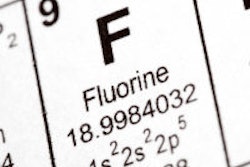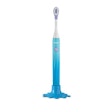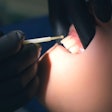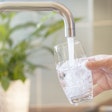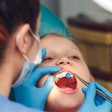
A new study has added an interesting twist to the fluoridated water debate.
Researchers from the University of Washington found that infant formula consumption may be associated with an increased risk of developing a detectable level of enamel fluorosis, depending on the amount of fluoride in the water supply used.
Researchers have previously identified infant formula consumption as a potential risk factor for enamel fluorosis in the U.S. population, the authors noted.
But this systematic review is the first to suggest that the risk for developing fluorosis from infant formula depends on the fluoride level in the water supply, lead study author Philippe Hujoel, D.D.S., Ph.D., M.S.D, M.S., a professor of dental public health sciences at the University of Washington School of Dentistry, told DrBicuspid.com.
— Philippe Hujoel, D.D.S., Ph.D., M.S.D,
M.S., University of Washington
Dr. Hujoel and his colleagues conducted a systematic review of controlled studies regarding the risk of developing enamel fluorosis associated with use of infant formula. Of 969 potentially eligible published studies, 41 studies evaluated the effect of infant formula on enamel fluorosis risk.
Of these, 14 publications did not provide reports of results. The 27 studies the authors selected for final review covered 19 original studies that had reports of the effects of infant feeding on fluorosis.
The 19 studies reported data for 17,429 subjects, with ages ranging from 2 to 17 years. Authors of 17 studies reported odds ratios; among these, infant formula consumption was associated with a higher prevalence of enamel fluorosis in permanent dentition.
The authors noted that there was heterogeneity among the studies and evidence of publication bias, however.
"A summary of the identified epidemiologic evidence suggests that infant formula consumption during infancy can be associated with an increased risk of developing at least some detectable level of enamel fluorosis in the permanent teeth," they wrote (Journal of the American Dental Association, July 2009, Vol. 140:7, pp. 841-854).
The risk increased as the fluoride concentration increased in the water supply, the authors also noted. The epidemiologic evidence that it was the fluoride in the infant formula that caused the fluorosis nonetheless was weak.
One interpretation of this evidence would be that public health officials should create guidelines for infant formula consumption, ensuring that the upper intake level established by the Institute of Medicine is not exceeded, the authors wrote.
Another approach would be to strive for fluoride levels in infant formula that are comparable with the levels observed in breast milk, they added.
"For some mothers, the issue of which approach to use will be moot, as most medical public health organizations recommend breast-feeding," the authors concluded. "For mothers who opt to use infant formula, whether exclusively or in conjunction with breast milk, mandatory reporting of fluoride levels for both infant formula and bottled water would allow them to make informed decisions about how they will feed their infants and children."
If patients seek a dentist's advice in this matter, the dentist can tell mothers who are not able to breastfeed and who are concerned about fluorosis that they should try to locate nonfluoridated water to prepare the infant formula, Dr. Hujoel added.
Copyright © 2009 DrBicuspid.com




